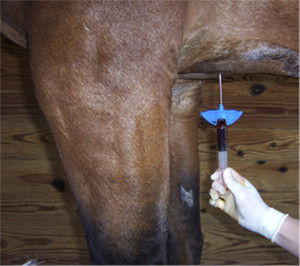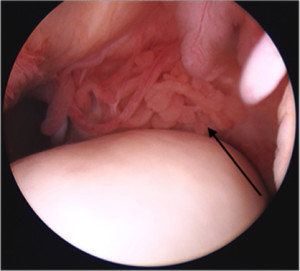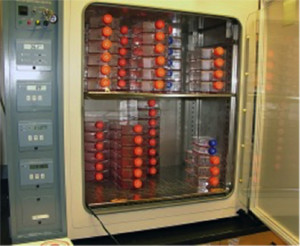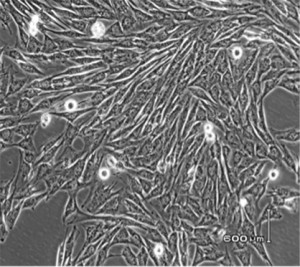Using Cell-Based Therapies to Treat Cartilage Damage in Horses

Bone marrow being collected from the sternum of a standing, sedated horse in preparation for culturing of bone marrow-derived mesenchymal stem cells.
By: Dr. Kyla Ortved
Feb. 2017
Traumatic joint injury and cartilage damage are ubiquitous in the equine athlete and, due to the poor healing capabilities of cartilage, often lead to post-traumatic osteoarthritis (OA). OA is a progressive, debilitating disease that is estimated to affect 60% of horses in the U.S. Currently, there are no drugs or treatments that halt or reverse the disease.
Dr. Kyla Ortved, Assistant Professor of Large Animal Surgery at New Bolton Center, has been interested in developing cell-based therapies to treat cartilage damage before it leads to total joint osteoarthritis. Adult mesenchymal stem cells (MSCs) have the potential to become an ideal source for cell-based treatment of cartilage lesions and OA. These cells can be obtained from different tissues in the adult horse, culture-expanded in the laboratory, and encouraged to differentiate into bone, fat, and cartilage-type cells.
The vast majority of cartilage repair work has been done using bone marrow-derived MSCs (BM-MSCs); however, full differentiation of these cells into cartilage remains elusive. Ortved has been evaluating MSCs derived from synovium, the tissue that lines the inside of joints. Synovium and cartilage share a common progenitor cell, and cartilage defects have been shown to heal with contribution of a continuous layer extending from the synovial membrane. Synovium can be collected easily through a small incision into the joint in the standing horse or during arthroscopic procedures.
Ortved has been characterizing synovium-derived MSCs (SD-MSCs) using flow cytometry and has been evaluating their ability to divide in culture to determine if these cells are a viable option for joint treatment in the horse. Current data show that cells derived from synovium have the cell surface markers consistent with adult stem cells. Additionally, SD-MSCs expand more quickly in culture when compared to BM-MSCs.
The next phase of the experiment, including comparison of differentiation of BM-MSCs and SD-MSCs into cartilage, is ongoing. The lab is optimistic that SD-MSCs will be a good source of cells for resurfacing cartilage defects so commonly observed in the joints of horses.













